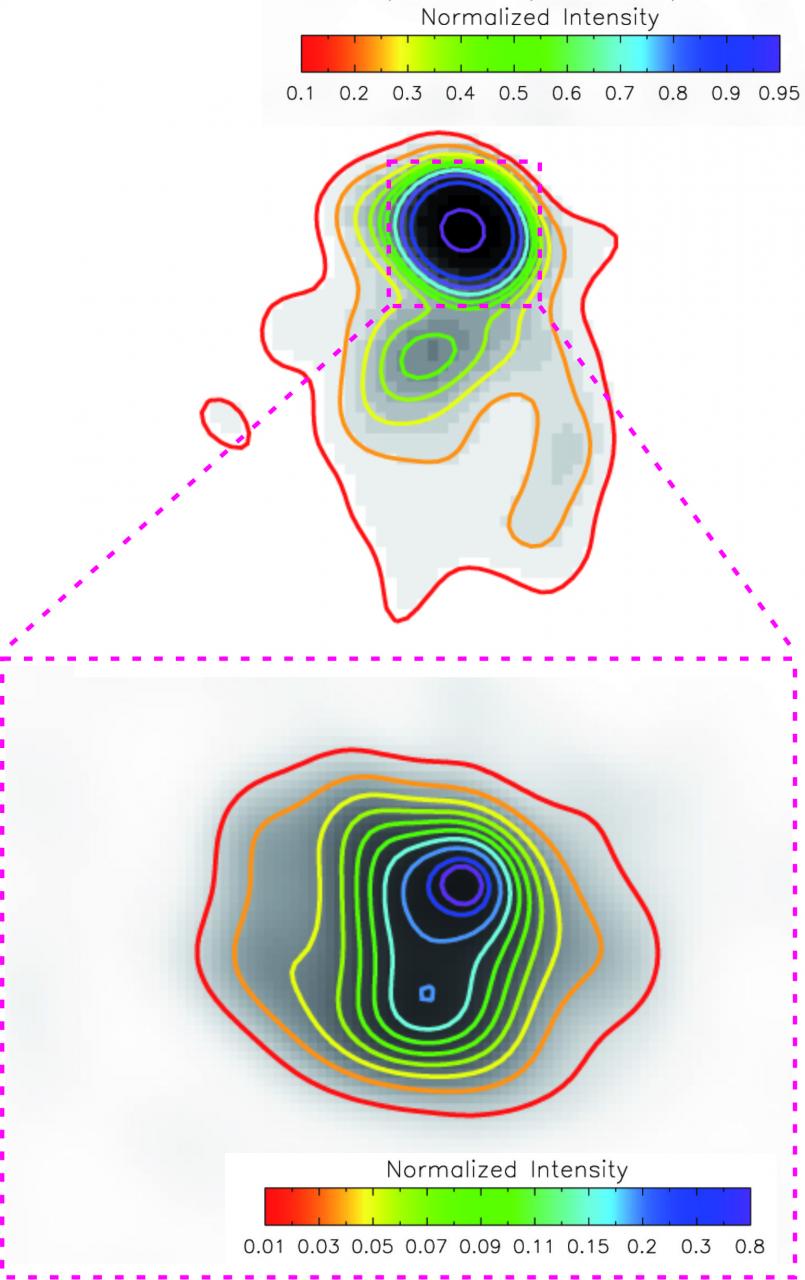Researchers from the IAA win the "Beauty Contest", an international competition to obtain optical/infrarred interferometric images
Imaging at optical/infrared wavelengths is a novel technique that has been developed during the last ten years
Imaging at optical/infrared wavelengths is a novel technique that has been developed during the last ten years. The main differences between imaging in Optical interferometry (OI) and radio astronomy are the Interferometric observables used. On the one hand, the optical/infrared interferometers measure only squared visibilities and closure phases. This is mainly because the atmosphere corrupts most of the phase information. On the other hand, radio telescopes work with visibilities and phases. This difference, in the operation of both techniques, place strong constrains to the image reconstruction. Particularly, it makes difficult the error estimation (artifacts, noise) when optical/infrared images are reconstructed using radio interferometry algorithms.
Therefore, due to his problem, at the 2001 meeting of the IAU Working Group on Optical Interferometry was born the idea to compare different algorithms to reconstruct optical/infrared interferometry images. Hence, as a consequence, the optical/infrared interferometry community released in 2004 the first “Beauty Contest”. There were several motivations for the imaging beauty contest: (1) encourage the use of the OI Exchange Format, identify problems in its definition, and revise it as necessary; (2) Engage the interferometry community in a formal assessment of existing software; (3) Encourage the development of new software tailored to the needs of optical interferometry (Lawson et al., 2004).
Since 2004, the contest has been repeated every two years and the number of scientific groups participating has also increased. The 2014 edition of the “Beauty Contest” had the participation of 10 different scientific groups from Europe (ESO, University of Cambridge, University of Exeter, Max-Planck-Institut für Astronomie, University of Lion, etc.). The data sets used to reconstruct the images requested the ESO’s Director for Science & Paranal Director to use freed technical time for this science. The data sets consisted in the observation of two targets, R Car (Mira type star) and VY CMa (Red super giant) using the PIONIER instrument at the VLTI. The data had excellent u-v coverage to generate good quality images. Among the participants, this year, by first time, the group on Optical Interferometry of the Spanish institute IAA-CSIC (Joel Sanchez-Bermudez, Antxon Alberdi and Rainer Schoedel) joined this initiative obtaining extraordinary results by winning the 2014 edition of the contest.
The following plots include the winner PIONIER images plus an additional NACO/SAM image also reconstructed during the process of the contest.

Instituto de Astrofísica de Andalucía (IAA-CSIC)
Unidad de Divulgación y Comunicación
Silbia López de Lacalle - sll[arroba]iaa.es - 958230532
http://www.iaa.es
http://divulgacion.iaa.es

